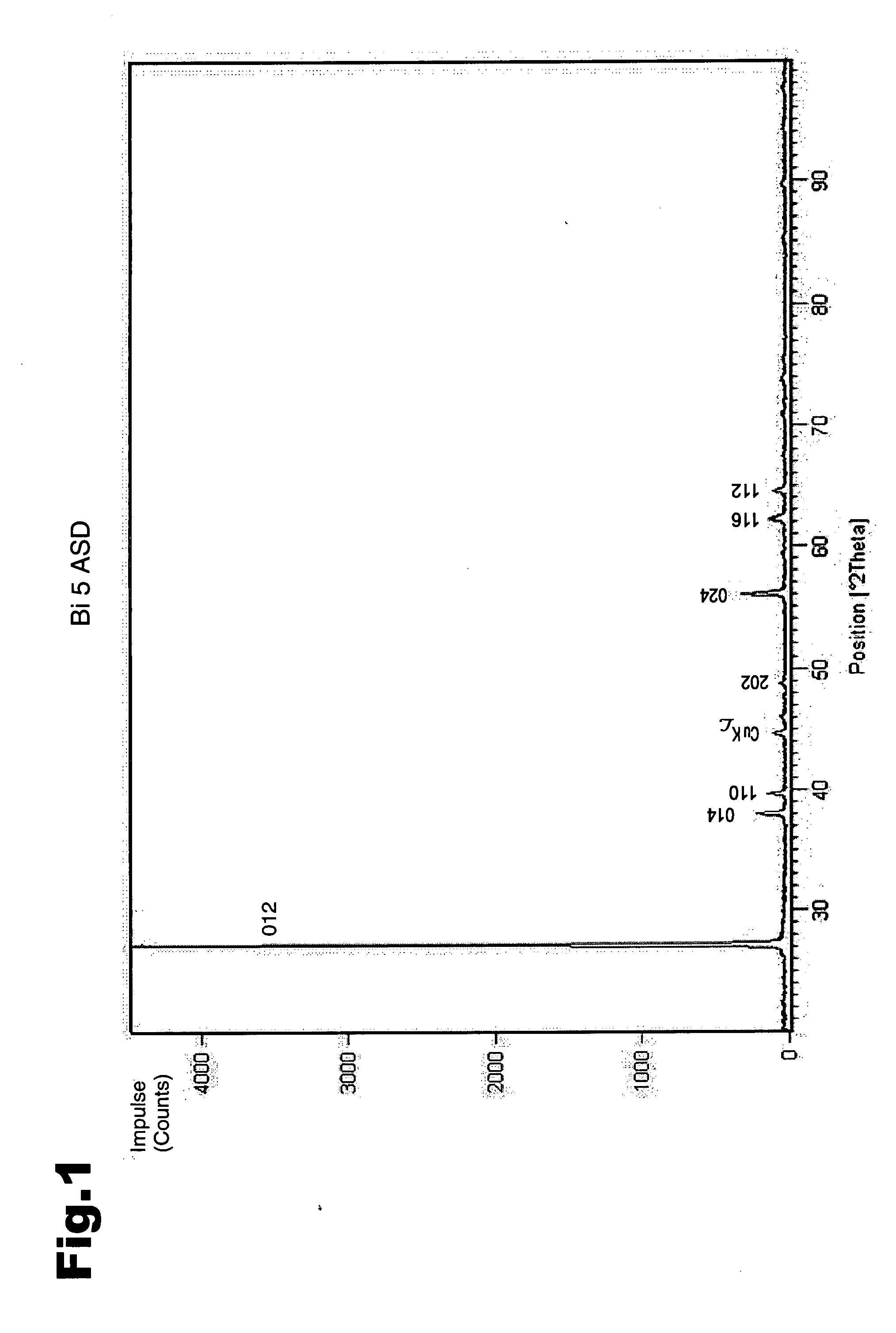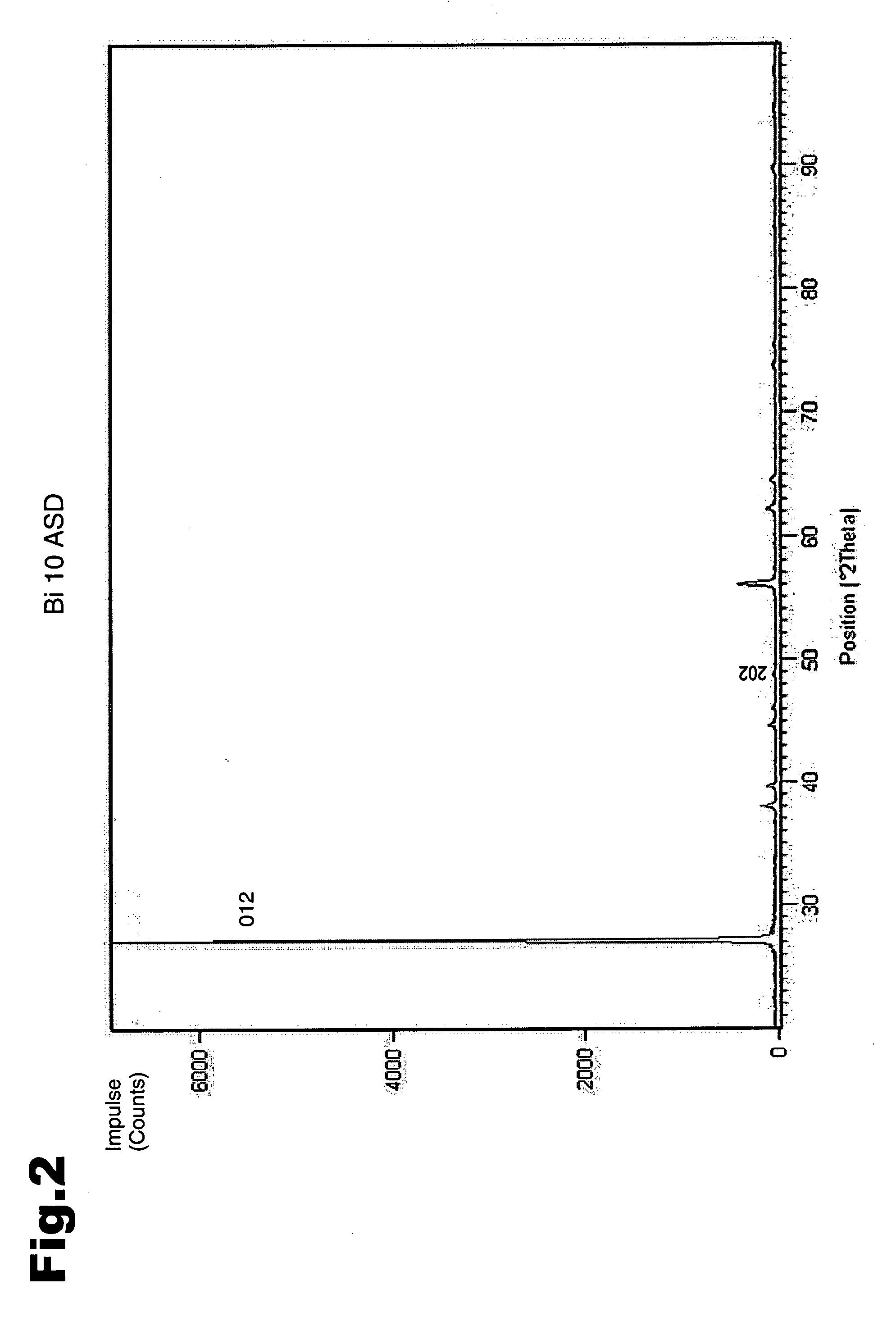Sliding element
a technology of sliding element and sliding contact bearing, which is applied in the direction of sliding contact bearing, other domestic articles, reflex reflectors, etc., to achieve the effect of improving wear resistance, facilitating production, and increasing the orientation of crystallites
- Summary
- Abstract
- Description
- Claims
- Application Information
AI Technical Summary
Benefits of technology
Problems solved by technology
Method used
Image
Examples
example 1
Bath Composition for the Galvanic Precipitation
[0041] 50 g / l Bi as methane sulphonate [0042] 80 g / l methane sulphonic acid to improve conductivity [0043] Addition of smoothing agent and at least one tenside.
[0044] Operating Data: [0045] Room temperature [0046] Current density: 5 A / dm2 (FIG. 1) or 10 A / dm2 (FIG. 2) or 15 A / dm2 (FIG. 3)
example 2
Bath Composition for the Galvanic Precipitation
[0047] 70 g / l Bi as methane sulphonate [0048] 50 g / l methane sulphonic acid to improve conductivity [0049] 1 g / l commercially available tenside for improving wettability [0050] 0.5 g / l layer smoothing additive (“leveller”)
[0051] Operating Data: [0052] Room temperature [0053] Current density: 5 A / dm2
[0054] Of the sliding layers produced X-ray diffraction diagrams were then recorded which are shown in FIGS. 1 to 3. The corresponding intensities for FIG. 1 are given in Table 1.
PlaneIntensity012456101422311016120282024339116178112125
[0055] The readout corresponds to a standard readout, whereby on the x-axis the °2 theta values are entered and on the y-axis the impulses (counts) are entered. The readout was produced by a camera and CuKα-radiation was used.
[0056] As shown from the comparison of the three diagrams according to FIGS. 1 to 3, with an increase in the current density during the precipitation the 012 plane comes more clearly ...
PUM
| Property | Measurement | Unit |
|---|---|---|
| Vickers hardness | aaaaa | aaaaa |
| Vickers hardness | aaaaa | aaaaa |
| thickness | aaaaa | aaaaa |
Abstract
Description
Claims
Application Information
 Login to View More
Login to View More - R&D
- Intellectual Property
- Life Sciences
- Materials
- Tech Scout
- Unparalleled Data Quality
- Higher Quality Content
- 60% Fewer Hallucinations
Browse by: Latest US Patents, China's latest patents, Technical Efficacy Thesaurus, Application Domain, Technology Topic, Popular Technical Reports.
© 2025 PatSnap. All rights reserved.Legal|Privacy policy|Modern Slavery Act Transparency Statement|Sitemap|About US| Contact US: help@patsnap.com



